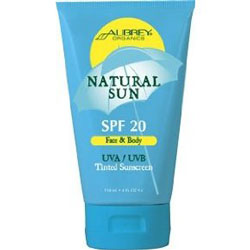It’s July of 2010. Alex had a bit too much to drink the night before and fell asleep next to the pool at his friend’s house without sunscreen on. He would later wake up with third degree sunburn from head to toe. He would be so dehydrated that he would require four IV’s of fluids at the hospital four days later and his knees would lock in a 90 degree angle as his muscles seize.
My fiancé now has scars all the way down his chest, arms and legs that make it look like his “nipples are crying.” All of this because he was irresponsible with his sun protection.
As the weather warms, we all look to shed the layers upon layers that the cold of winter forces us into. But before you put on your tanks and flip flops, make sure that your sun protection routine is up-to-date and that you have it down pat.
According to the Center for Disease Control (CDC), in New Jersey, up to 20 percent of residents have some form of melanoma of the skin. This condition, which can come in the form of basal cells, squamous cells or serious melanoma, can be skin cancer and requires removal of the area. It can even cause death if allowed to spread.
Skin cancer and melanoma can be easily prevented. The number one cause of skin cancer is the exposure to Ultra Violet rays, or UV Rays, which come most often from the sun. These rays can be blocked with sun protective factor (SPF). There are three top ways to increase your sun protection. Use sunscreen, seek shade and avoid indoor tanning.
First, use sunscreen. It’s what your mom told you every day all summer when you were running out of the house to hit the beach. “Don’t forget the sunscreen!” She was right. Sunscreen with an SPF of at least 15 containing both UVA and UVB protection is vital to sun protection. And not just when you know that you are going to be in the sun a lot – always. Is it winter? Wear daily lotion with SPF in it. Cloudy out? Slather on that sunscreen, baby. The sun gets through the clouds and often is more intensified with the increased moisture in the air.
And what about how much you should put on? When applying sunscreen, put on a shot glass full of the gunk. I know you know how much goes into a shot glass. And while you’re putting it on, make sure you distribute it evenly and mindfully. Don’t slather it on like an angry child or you’ll look like a sunburned zebra.
It is even more important to wear sunscreen when you are somewhere where the sun’s rays are the strongest. Think about how hot the blacktop gets in the summer from the sun. Now think about your poor skin if you play basketball all day on that same blacktop. Other culprits that can cause sunburns are water, sand and snow, which reflect the sun’s rays onto your body.
When you know you’ll be somewhere with a high risk of sun exposure, maybe think about washing your clothes in a detergent that contains SPF as well. The UV rays can get through your clothing, and this will act as another barrier between you and the harm.
Regardless, remember to always put on your sunscreen first thing before you put your clothes on. As to not miss anywhere, re-apply every three hours or when you get out of the water, and put it on at least 20 minutes before you leave the house so the lotion has time to absorb.
Second, seek shade. If you are at the beach, bring an umbrella. At the park, sit under a big leafy tree. The sun’s harmful rays will have a tougher time reaching you there. Don’t forget, the sun is at it’s peak between the hours of 9:00 am – 3:00 pm, so keep that in mind. Maybe eat lunch indoors and keep an even closer eye on your sunscreen application at this time.
Oh, and you. Yes, you, who is already unnaturally tan even though it’s only April. Stop going to the tanning bed. Haven’t you seen Tanning Mom? Not a cute look. Not to mention, according to the CDC, “people who begin tanning younger than age 35 have a 75 percent higher risk of melanoma.” By tanning indoors, which uses UV lamps close to you to tan your skin, you’re basically asking for trouble. And anything you’ve heard about it being a safer way to tan? Don’t believe it. It’s an old wives tale. Try a spray tan, or go au-natural.
Lastly, what happens if you ignore my advice and find an odd mole? Before you freak out, use the skin ABCD’s to determine the risk. A is for asymmetrical. If the mole is an odd shape and not symmetrical, get it checked out. B is for borders. If the edges are ragged or irregular, consult a doctor. C is for color, which may be uneven with shades of brown or black if it is skin cancer. D is for diameter, which may change in size, another red flag. Remember though, I am not a doctor. If something seems wrong to you, go to the doctor and have it checked out to be safe.
Don’t be like Alex. Crying nipples, or even just a sun burn, is not a good look and never fun. Be safe and use protection. Sun protection, that is. And if I can’t convince you to take caution any other way, simply think about all the wrinkles you’ll have without some well thought out sun protection in your youth.
And since you’re being so diligent, don’t forget your eyes. Make sure your sunglasses have UVA/ UVB protection. The sun can be just as damaging to your eyes and vision as it can be to your skin.
IMAGE TAKEN from celebritybabies.people.com


